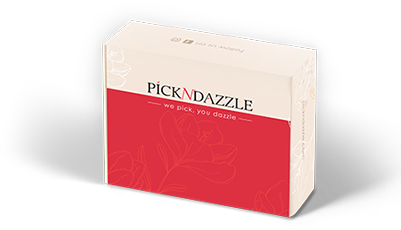We know what we like. Beauty is indeed in the (lightning-quick) eye of the beholder. Volunteers exposed to faces that had been prejudged as beautiful or homely registered a response in just 13 milliseconds, below the threshold for conscious awareness. The subjects insisted they saw nothing, yet when asked to rate the attractiveness of the face they'd just viewed, they accurately identified those that were better-looking in a 2005 study published in Emotion.
Brunettes make bank. Maybe blondes look like they're having too much fun? When 136 people were given an identical résumé and one of six different photographs of a female applicant for an accounting position, they judged her as worthy of a higher salary when she appeared as a brunette who was not wearing makeup, according to a study at California State University, San Marcos.
Some people have a face for politics. Masculine features, including lower eyebrows and cheekbones, were associated with dominance, according to a 2014 study at the University of York in England. In other studies, subjects noted that high eyebrows, which open up the eye, made a person seem warm and naive. People make judgments about traits like trustworthiness, competence, likability, and aggressiveness with remarkable speed. A group of Princeton researchers found it took just 100 milliseconds.
Blue eyes are appealing. The population of the United Kingdom was actually once overwhelmingly brown-eyed, and now it's 48 percent blue, but scientists don't think there's an evolutionary advantage to pale eyes beyond boosting attractiveness. "Blue eyes probably function like the peacock's tail," says Alistair Moffat, the managing director of BritainsDNA, the company that did the survey of eye color in 2014. "It doesn't confer any evolutionary advantage, except that it gets him more mates."
Brown eyes have their advantages, too. Both brown-eyed men and women were rated as more trustworthy than those with blue eyes—even when scientists in a 2013 Czech Republic study changed their eye color digitally. It turns out that features associated with brown eyes may make the impression, regardless of eye color.
Your eyes show their age. But not in the way you think. The limbal ring—the dark area around the edge of the iris—becomes less noticeable with age or ill health, so dark ones may suggest vitality. Subjects judged faces with clearly visible limbal rings as more attractive than identical faces without rings in a 2011 University of California at Irvine study. Acuvue has a line of contact lenses that darken the ring.
A smile is a potent anti-ager. A smile makes a person look more approachable, of course. German researchers found that a broad smile also makes middle-aged people look younger. That's probably a result of two factors: first, what researchers called the "halo effect," wherein a friendly face is just more attractive than a neutral one, and second, the fact that wrinkles on a smiling face seem temporary.
Average may not be such a bad thing. Men are drawn to women whose faces are neither very thin nor especially full, researchers in Finland found in 2013. They theorized that there's an unconscious link between a healthy weight and the perception of fertility. The fullness of your face can also affect how old people think you are. A face with extra weight can make a woman under 40 look older but make women over 40 look younger. A study of 186 identical twins found that as they aged, the heavier twin's face looked younger than her slimmer sister's, thanks to her plumped-up fine lines.
Perspective matters. Selfie addicts, take note: Women were considered more attractive when their faces were tilted slightly downward, which is what they look like from above. Their faces were rated as less attractive—and less feminine—when they were tilted up, simulating a view from below, researchers found in a 2010 study published in Evolutionary Psychology.
Cute can be a mixed blessing. When subjects in a Brandeis University study were asked to look at candidates for various jobs, men and women with a "baby face"—big eyes, a small nose, and a round jawline—were more likely to land the hypothetical teaching jobs, but those with more mature faces were considered stronger candidates for a director position. The same Brandeis team looked at 500 small-claims court cases and found that baby-faced defendants were less likely to be convicted of crimes of intent but more likely to be convicted of crimes involving negligence. In yet another study, sketches of adults with small noses earned a mixed bag of descriptors: "physically weaker, more socially submissive, and more intellectually naive."
Wear (some) makeup. Women wearing moderately colorful makeup were judged as more likable, competent, and trustworthy than those with bare faces, whereas a face with a lot of color didn't register all of those same positive impressions, according to a study at Massachusetts General Hospital.
Source: www.allure.com




